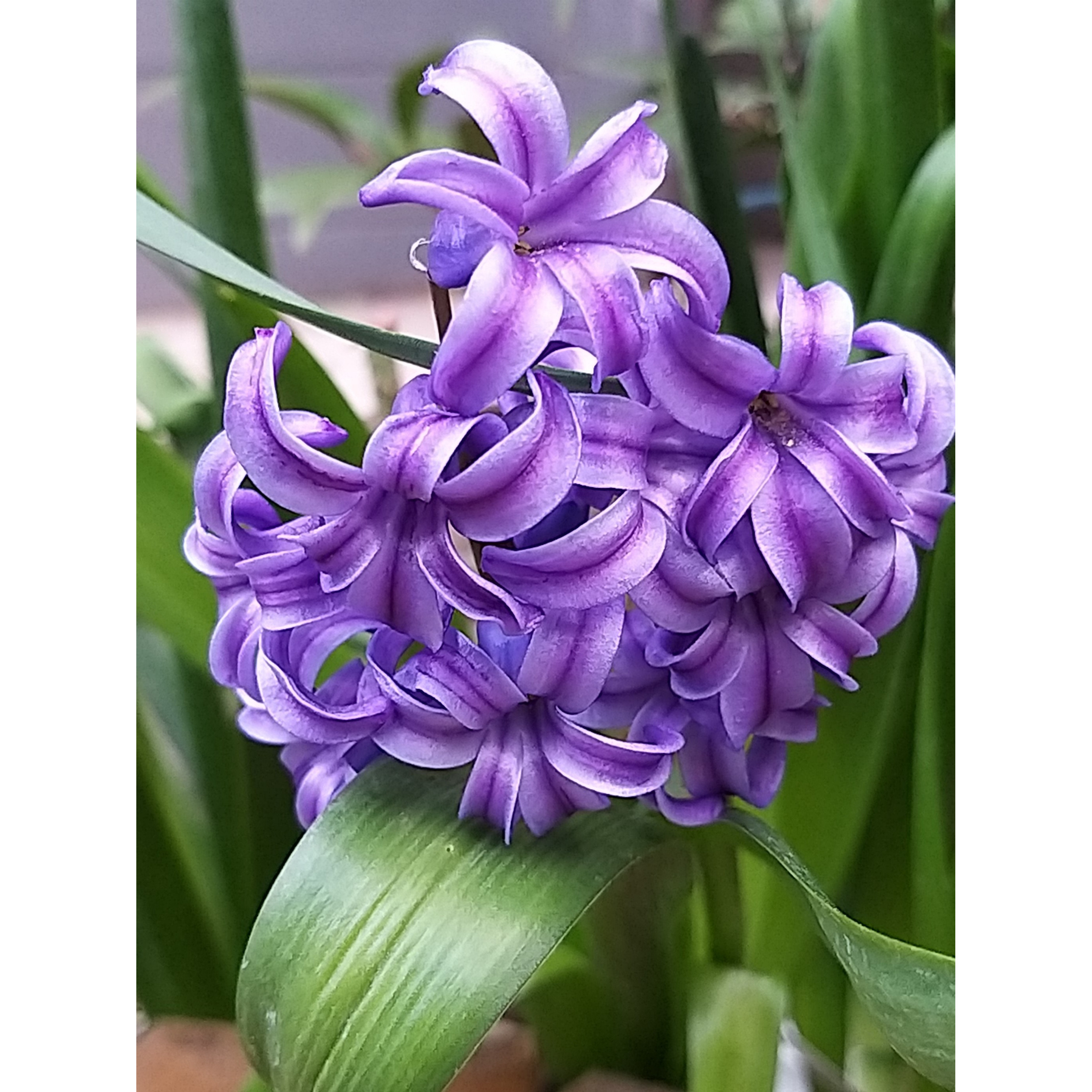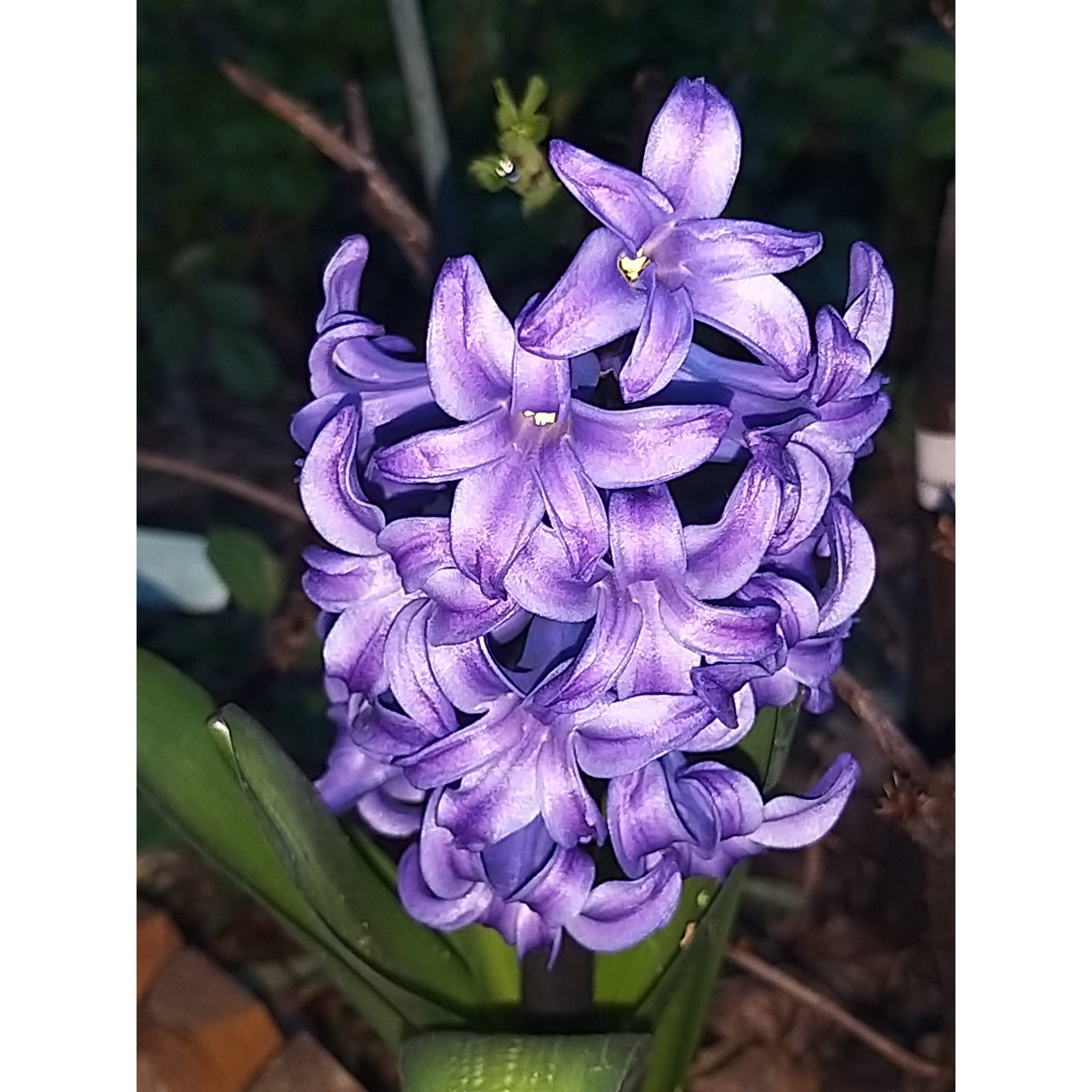

Jacinthe Rembrandt
View more pictures
Hide images

Thierry P.

March flowering - image 9
Thierry P. • 84 FR

Thierry P.

March flowering - image 8
Thierry P. • 84 FR

Thierry P.

March flowering - image 7
Thierry P. • 84 FR

Thierry P.

April flowering - image 6
Thierry P. • 84 FR

Thierry P.

Flowering in April - image 4
Thierry P. • 84 FR

Thierry P.

N/A
Thierry P. • 84 FR
Hyacinthus x orientalis Rembrandt
Hyacinthus x orientalis Rembrandt
Common Hyacinth, Garden Hyacinth
Beautiful bulbs. I'm looking forward to the flowering.
Mt, 12/10/2018
Special offer!
Receive a €20 voucher for any order over €90 (excluding delivery costs, credit notes, and plastic-free options)!
1- Add your favorite plants to your cart.
2- Once you have reached €90, confirm your order (you can even choose the delivery date!).
3- As soon as your order is shipped, you will receive an email containing your voucher code, valid for 3 months (90 days).
Your voucher is unique and can only be used once, for any order with a minimum value of €20, excluding delivery costs.
Can be combined with other current offers, non-divisible and non-refundable.
This plant carries a 6 months recovery warranty
More information
We guarantee the quality of our plants for a full growing cycle, and will replace at our expense any plant that fails to recover under normal climatic and planting conditions.

Would this plant suit my garden?
Set up your Plantfit profile →
Description
The Hyacinth or Rembrandt orientalis Hyacinthus is a recent and unusual variety of hybrid hyacinth with its bicoloured star-shaped flowers. Its large clusters, highly fragrant, are composed of dozens of dark blue-violet florets, finely bordered with a very pale blue becoming white. This variety blooms from late March to early April in the garden and will flourish in the heart of winter indoors. They last a long time and bloom from the first year of cultivation.
Although the Oriental Hyacinth is no longer widely cultivated, this slender species with small spikes of blue flowers, originating from the Middle East and Mediterranean regions, has given rise to countless cultivars called Dutch Hyacinths, highly appreciated in gardens for their delightfully fragrant spring flowering or in floristry for their forcing ability. This botanical species can be found naturalized in France in Bouches-du-Rhône, Var, Alpes-Maritimes, and Lot-et-Garonne.
The Rembrandt hyacinth, like it, belongs to the family of hyacinthaceae or asparagaceae. It has a large oval bulb and forms a clump of bright green ribbon-like leaves from spring onwards, from which a robust floral stem, 20 cm (8in) long, emerges in March-April, bearing 30 to 40 star-shaped flowers, 2 to 4cm (1 to 2in) long, tightly packed together, with a thick waxy substance, deep blue-violet with a very pale blue edge, and a sweet fragrance. The flowering is nectar-rich, attracting butterflies. It is accompanied by deciduous foliage, disappearing in summer and reappearing in late winter. It consists of bright green leaves, 15 to 35 cm (6 to 14in) long. The hyacinth reaches a height of 25-30 cm (10-12in) at maturity.
Among early bloomers, the hyacinth is one of the few bulbs with large flowers. The Rembrandt hyacinth can be grown both in border beds and in pots or vases. In the ground, it will renew itself for several years. In a pot, it will only last for one season. Reserve a prime spot in the garden, not far from the entrance of the house, to enjoy its fragrance every time you pass by. It will bring spectacular splashes of color to your flower beds. Hyacinths can easily be paired with other early bulbs such as Chionodoxas, hybrid crocuses, or early-flowering Tulips humilis. Their flowers are edible, raw or cooked, and have a slightly mucilaginous texture. Depending on your preferences, you can crystallize them with sugar or incorporate them into fruit salads. In the past, they were considered a delicacy and could be found under the name of "candied Constantinople hyacinths".
Report an error about the product description
Plant habit
Flowering
Foliage
Botanical data
Hyacinthus
x orientalis
Rembrandt
Hyacinthaceae
Common Hyacinth, Garden Hyacinth
Cultivar or hybrid
Planting and care
The Rembrandt Hyacinth thrives in the sun. You can also place it in a semi-shaded area. It is hardy in zone 8b (-10/-12°C (14/10.4°F)). When cultivated in a pot, place it away from drafts. Plant this hyacinthus from October to November at a depth of 10 cm (4in) in a cool, light, low-fertility soil that is well-drained. If the soil is heavy, add sand to it during planting. The bulbs should be spaced 4 to 8 cm (2 to 3in) apart. In very harsh climates, cover them with a litter layer of leaves to protect them from extreme cold. The stems of varieties with large flowers can be staked. After flowering, when the leaves have turned yellow and withered and you have cut off the faded flowers, dig up the bulbs and store them in a dry place until they can be replanted in the following autumn. The second flowering will be less abundant but still beneficial in a mass planting. Reserve a prime spot in the garden for hyacinths as they are one of the few bulbs with large flowers that bloom early. Avoid excessive water during winter to prevent diseases such as grey rot. Other than that, this bulbous plant is resistant to diseases.
Planting period
Intended location
Care
-
, onOrder confirmed
Reply from on Promesse de fleurs
Haven't found what you were looking for?
Hardiness is the lowest winter temperature a plant can endure without suffering serious damage or even dying. However, hardiness is affected by location (a sheltered area, such as a patio), protection (winter cover) and soil type (hardiness is improved by well-drained soil).

Photo Sharing Terms & Conditions
In order to encourage gardeners to interact and share their experiences, Promesse de fleurs offers various media enabling content to be uploaded onto its Site - in particular via the ‘Photo sharing’ module.
The User agrees to refrain from:
- Posting any content that is illegal, prejudicial, insulting, racist, inciteful to hatred, revisionist, contrary to public decency, that infringes on privacy or on the privacy rights of third parties, in particular the publicity rights of persons and goods, intellectual property rights, or the right to privacy.
- Submitting content on behalf of a third party;
- Impersonate the identity of a third party and/or publish any personal information about a third party;
In general, the User undertakes to refrain from any unethical behaviour.
All Content (in particular text, comments, files, images, photos, videos, creative works, etc.), which may be subject to property or intellectual property rights, image or other private rights, shall remain the property of the User, subject to the limited rights granted by the terms of the licence granted by Promesse de fleurs as stated below. Users are at liberty to publish or not to publish such Content on the Site, notably via the ‘Photo Sharing’ facility, and accept that this Content shall be made public and freely accessible, notably on the Internet.
Users further acknowledge, undertake to have ,and guarantee that they hold all necessary rights and permissions to publish such material on the Site, in particular with regard to the legislation in force pertaining to any privacy, property, intellectual property, image, or contractual rights, or rights of any other nature. By publishing such Content on the Site, Users acknowledge accepting full liability as publishers of the Content within the meaning of the law, and grant Promesse de fleurs, free of charge, an inclusive, worldwide licence for the said Content for the entire duration of its publication, including all reproduction, representation, up/downloading, displaying, performing, transmission, and storage rights.
Users also grant permission for their name to be linked to the Content and accept that this link may not always be made available.
By engaging in posting material, Users consent to their Content becoming automatically accessible on the Internet, in particular on other sites and/or blogs and/or web pages of the Promesse de fleurs site, including in particular social pages and the Promesse de fleurs catalogue.
Users may secure the removal of entrusted content free of charge by issuing a simple request via our contact form.
The flowering period indicated on our website applies to countries and regions located in USDA zone 8 (France, the United Kingdom, Ireland, the Netherlands, etc.)
It will vary according to where you live:
- In zones 9 to 10 (Italy, Spain, Greece, etc.), flowering will occur about 2 to 4 weeks earlier.
- In zones 6 to 7 (Germany, Poland, Slovenia, and lower mountainous regions), flowering will be delayed by 2 to 3 weeks.
- In zone 5 (Central Europe, Scandinavia), blooming will be delayed by 3 to 5 weeks.
In temperate climates, pruning of spring-flowering shrubs (forsythia, spireas, etc.) should be done just after flowering.
Pruning of summer-flowering shrubs (Indian Lilac, Perovskia, etc.) can be done in winter or spring.
In cold regions as well as with frost-sensitive plants, avoid pruning too early when severe frosts may still occur.
The planting period indicated on our website applies to countries and regions located in USDA zone 8 (France, United Kingdom, Ireland, Netherlands).
It will vary according to where you live:
- In Mediterranean zones (Marseille, Madrid, Milan, etc.), autumn and winter are the best planting periods.
- In continental zones (Strasbourg, Munich, Vienna, etc.), delay planting by 2 to 3 weeks in spring and bring it forward by 2 to 4 weeks in autumn.
- In mountainous regions (the Alps, Pyrenees, Carpathians, etc.), it is best to plant in late spring (May-June) or late summer (August-September).
The harvesting period indicated on our website applies to countries and regions in USDA zone 8 (France, England, Ireland, the Netherlands).
In colder areas (Scandinavia, Poland, Austria...) fruit and vegetable harvests are likely to be delayed by 3-4 weeks.
In warmer areas (Italy, Spain, Greece, etc.), harvesting will probably take place earlier, depending on weather conditions.
The sowing periods indicated on our website apply to countries and regions within USDA Zone 8 (France, UK, Ireland, Netherlands).
In colder areas (Scandinavia, Poland, Austria...), delay any outdoor sowing by 3-4 weeks, or sow under glass.
In warmer climes (Italy, Spain, Greece, etc.), bring outdoor sowing forward by a few weeks.
































